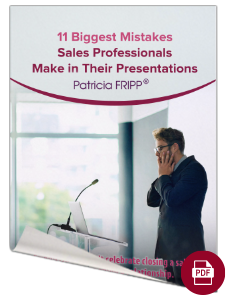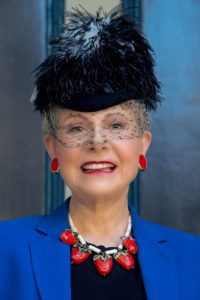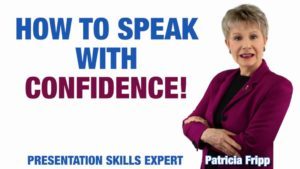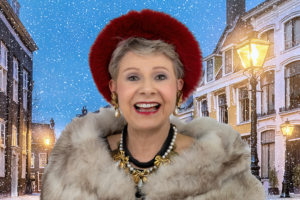Can you imagine how exciting it was, back in 2009, to sit in an aisle seat reading an airline magazine and see others read the same article? Especially as I was heavily featured in what they were reading. After reading it, I thanked Leonard Navarro for opening his article with my comments. His reply was, “You told the best story.”
Enjoy.
Patricia Fripp was coaching a CEO from a major corporation. He had eight minutes to outline a money-saving program to their employees. Instead of leading off with money talk, she suggested he walk on stage and say, “We are here to talk about heroes,”
and then pause . . .
and continue pausing . . .
for a long,
long
time.
The effect was not lost on the audience. Slowly, the titters began, followed by an outburst of laughter. But the tactic sent the message. Where are the heroes? Continuing, the speaker pointed out, “They may be sitting behind you, they may be sitting in front of you, or they may be you.”
Every single person in the audience sat forward. “They knew he was talking directly to them,” recalls Fripp. She is a San Francisco-based, in-demand executive speech coach and sales presentation skills expert. “The audience was enthralled. What he proved was that this was not going to be another dull company speech.”
I agree with Patricia when she says, “Today’s audiences are stimulation junkies with short attention spans. If they are not engaged, they are likely to be on social media.”
That first 30 seconds has ripple effects; what happens during that time can make or break a meeting. Because the stakes of meetings can be so perilously high, more and more companies are calling on the professionals like Patricia Fripp to help make a presentation riveting. She told me, “The purpose of the opening is to arouse interest in your subject. If you don’t engage them in the first few minutes, you are unlikely to ever gain their total attention. I help my clients create opening remarks that arouse interest in their first 30 seconds.”
This reminds me of a story. The opening is still the most important part of any presentation. Fripp said, “It can be a dramatic statement, such as, “This emerging technology is going to affect your business, it might even put you out of business.” She recommended that one of her speech coaching clients use that at a recent gathering. The message: If you don’t change, you’ll end up fighting a war you can’t win. She recommended that he then soften the blow by telling his audience not to worry too much and presenting them with new strategies.
Stories are also an effective way to grab and hold an audience. “When you think of any compelling speaker,” says Rick Barrera, a business strategist, and popular speaker, “you think of someone who can really tell a story to engage an audience and relate that to solid content. Stories make the content interesting.”
Humor is fine as long as it’s appropriate and relates to the subject or the audience. “You can tell a long joke if the story has a big payoff,” says Barrera.
Another effective opener is a great personal story. Fripp coaches her clients to use personal stories that have well-developed characters, use sparkling dialogue, and the lesson is obvious. In framing their anecdotes, she suggests they tell a story in which the audience can “see the person behind the position” and then relate it to their specific message. For example, to convey the message of the importance of corporate citizenship, she asked one of her CEO clients who had to address 1,500 sales professionals, “How do you describe corporate citizenship to your children?” His story modeled her example well. “He said, “It was the day after Christmas, I sat my two children down and said, ‘You are very lucky children. You have generous parents and even more generous grandparents. Perhaps you would like to give me one of your gift certificates and we can cash in the money and send the children who no longer have homes.’” He told me, “I was so proud of my 14-year-old son. He said, ‘How much do I give? I could give you all of my savings, all of my pocket money, and all my Christmas gifts. It would not be enough to make a difference.’ I told him, “You never give it all. You just give enough that it hurts a little.”
More than words. Grabbing an audience is only the first step. “What’s harder is keeping their attention,” says Jim Hall, Director of Marketing for audiovisual products at Epson America in Long Beach, California. “We are the television generation. We expect to be entertained, and the more professional the presenter, the higher that expectation.” For Hall, the golden rule is to make sure he knows the audience and finds a subject they care about. He uses a variety of techniques when he promotes Epson products to large groups. He maintains eye contact with the audience and makes large, theatrical gestures to make a point. “It’s extra important,” he says, “to change inflection. If you don’t vary the tone of your voice, even if they are interested in what you’re saying, they’ll go to sleep.”
Keep it fresh. “Meetings should have good stories and good visual aids, but you can’t think that’s enough,” says Mel Silberman, professor of Adult and Organizational Development at Temple University and author of 101 Ways to Make Meetings Active. After a presentation, he has participants turn to each other to discuss its meaning.
Adapted from an article by Leonard Navarro for Alaska Airlines
As a bonus: Download Patricia Fripp’s special report 8 Common Pitfalls to Avoid When You Speak
Imagine your results, if you could benefit from Patricia’s advice 24/7? Take a trial of FrippVT Powerful, Persuasive Presentations.
“Patricia, you saved the day! I was summoned on rather short notice to speak as a keynote speaker for our corporate annual sales conference. My task was to relate technical details to a non-technical audience. Lucky for me, a week in advance I found FrippVT. I worked tirelessly devouring the FrippVT content most evenings until 2 a.m. to perform at the highest level possible.
Can you imagine my excitement to walk off stage and hear, ‘You stole the show,’ ‘Are you a professional speaker?’ and ‘The audience was hanging onto your every word.’ I cannot thank you enough for creating FrippVT. Having your wisdom, advice, and guidance 24/7 throughout my preparation for this speaking engagement. Consider me your biggest fan.” Scott Lelii, Head of Digital & IT, Volvo Construction Equipment Sales Regions North & Latin America
Take a Trial of FrippVT today!



 . Here are ways to leave a great lasting impression.
. Here are ways to leave a great lasting impression.





